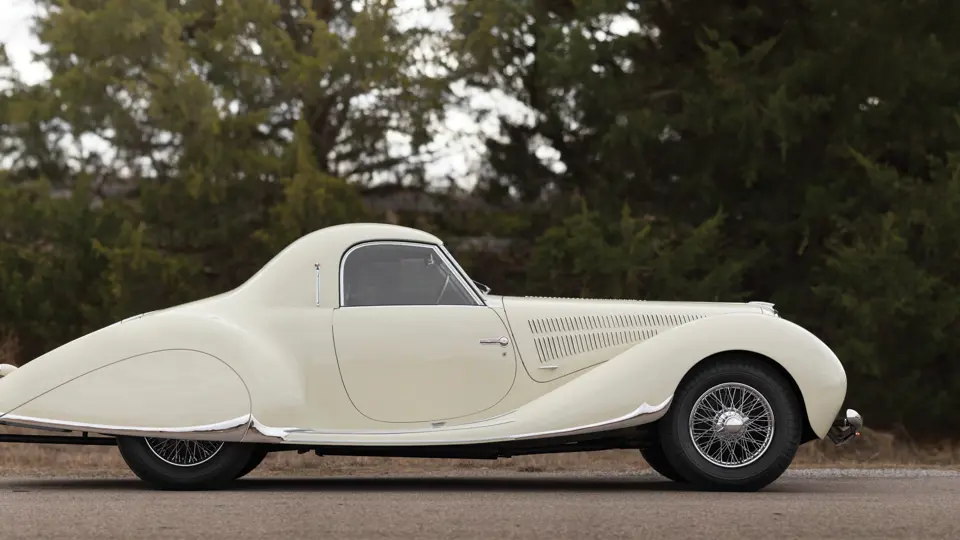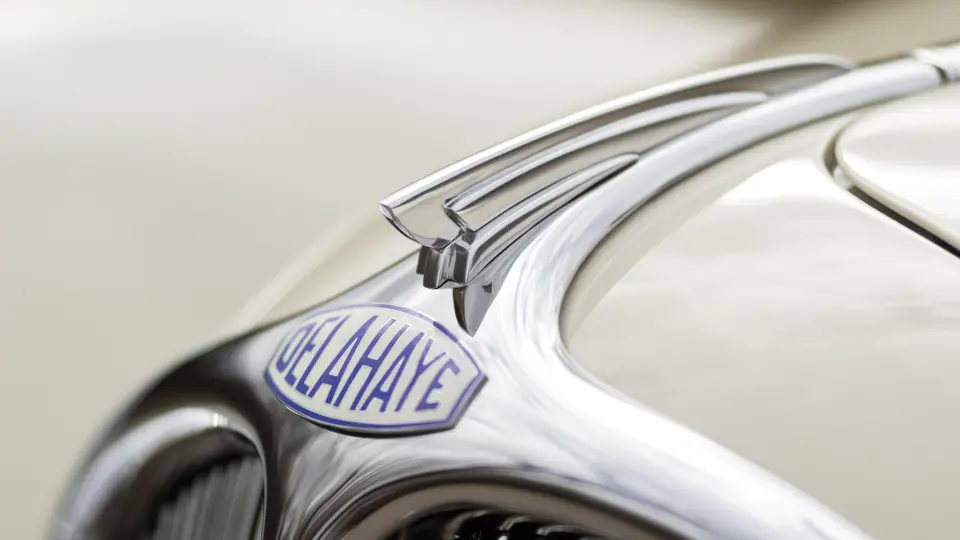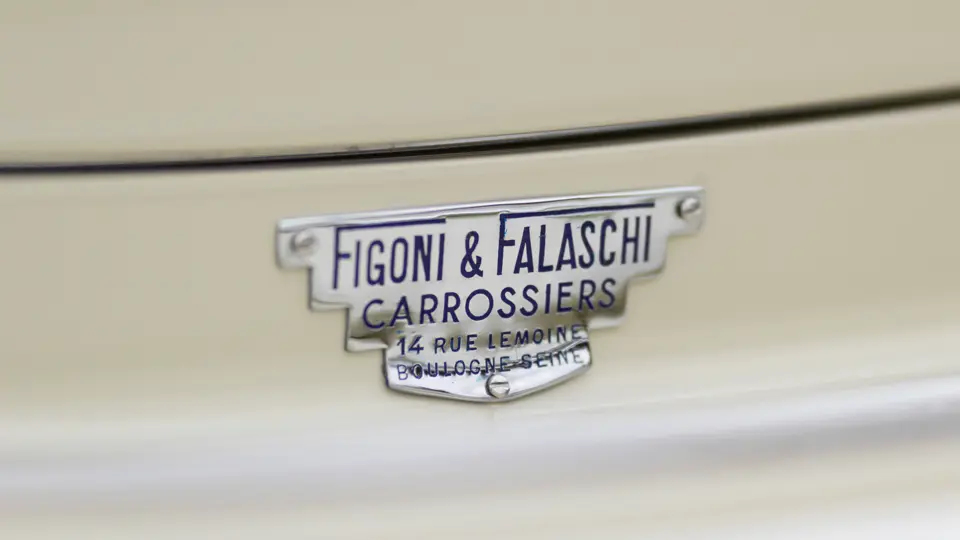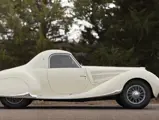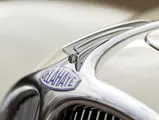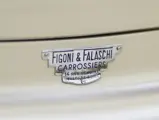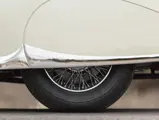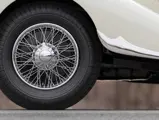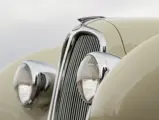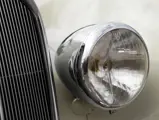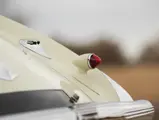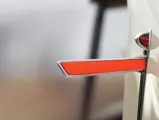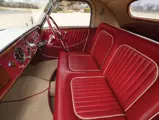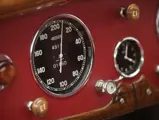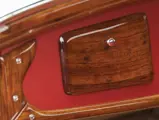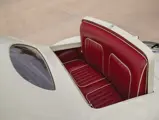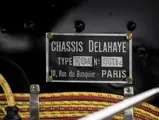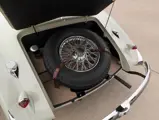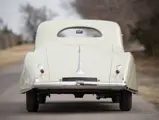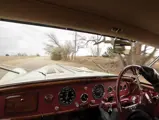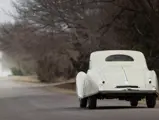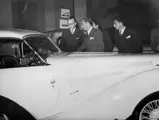
1938 Delahaye 135 MS Coupe by Figoni et Falaschi
{{lr.item.text}}
$990,000 USD | Sold
{{bidding.lot.reserveStatusFormatted}}
- Displayed on the Figoni et Falaschi stand at the 1938 Paris Salon
- Formerly owned by Antoine Rafaelli and Peter Kaus
- Concours restoration by marque specialists, as well as a recent sorting
- Equipped with the desirable racing-specification MS engine
160 hp, 3,557 cc overhead-valve inline six-cylinder engine, Cotal electro-mechanical four-speed gearbox, independent front suspension with a transverse leaf spring, live rear axle with quarter-elliptic springs, and four-wheel-assisted mechanically actuated Bendix drum brakes. Wheelbase: 114 in.
A particular highlight of the mid-1930s, and arguably the height of the French coachbuilt era, was Figoni et Falaschi’s introduction of the Goutte d’Eau, or teardrop streamliners, which were built as coupes and cabriolets on both Delahaye and Talbot-Lago chassis.
Both pre- and post-war, Figoni et Falaschi’s stand at the Paris Salon was a “must-see” attraction. Although teardrop cars were made in relatively small numbers, they were so immediately eye-catching that they became instant icons, and they remain so today. This particular example of Figoni coachwork was built on Delahaye’s Type 135 chassis, a model that was introduced in 1935 at the Paris Salon and was enthusiastically received. It proved delightful to drive, producing 160 horsepower in this most-powerful MS configuration. Of its performance, The Motor wrote in 1938, “There are few cars with such superb roadholding and steering, such performance, and such instantly responsive controls.”
CHASSIS NUMBER 60112
The Delahaye 135 MS Coupe on offer here, chassis number 60112, was clothed with Figoni body number 729 for the 1938 Paris Salon, where it shared the Figoni et Falaschi stand with a fabulous V-12-powered Delahaye 165 Cabriolet.
It seems likely that this Delahaye was hidden from occupying forces during World War II, as it was not discovered until 1964, in the ownership of its second known owner, Madame Michele Gautier of La Seyne-sur-Mer, a few miles from the Mediterranean port of Toulon in Southern France. The car was hidden behind a hedge of bulrushes and discovered by none other than Antoine Raffaelli, the most well-known enthusiast for prying Bugattis out of their pre-war hiding places, particularly around Europe and France. At the time of the discovery, it was wearing registration 308 M 6, which was from the nearby Alpes-Maritimes region. Given that the number is so low, it is likely that it dates back to the original ownership. Only in 1983 was it registered to Madame Gautier, under 740 AN 83, likely to establish her ownership of the car prior to its pending sale.
Rafaelli finally acquired chassis 60112 from Madame Gautier in 1985, and it was again registered in Alpes-Maritimes, this time as 3506 VJ 06. He then delivered the Coupe to the workshops of Jacques Conforti, of the Quartier du Port in Nice, for a meticulous restoration, which took place between 1986 and 1987. The find was documented in the French publication La Vie de l’Auto, when the restorer was reaching out to confirm that this was indeed the 1938 Paris salon car. During the restoration, it was found that the skin and wood had suffered from exposure to the elements, so the wood framing was largely replaced and the sensuous shape of the skin was recreated in steel. Minor styling updates, which are presumed to have been performed in the 1940s, include a restyled narrower grille, and chrome embellishments that were added to the leading edges of the front bumpers were retained.
Raffaelli sold the car in 1990, and it was in the care of two owners until 1998. That year, the car joined Peter Kaus’s renowned Rosso Bianco Collection in Aschaffenburg, Germany, where it remained until 2006, when it was purchased by American collector John O’Quinn.
RESTORATION
In its new American ownership, the restoration on the Delahaye was found to be aging and a fresh one was commissioned. Mr. O’Quinn hired Parisian Delahaye expert Benoit Bocquet as a consultant on the restoration, who recommended Atelier Automobiles Anciennes Dominique Tessier to assume the task. They embarked on a two-year restoration, which was truly a labor of love, with the strictest attention to detail being paid.
The car was brought down to its bare chassis before a meticulous rebuild was conducted on the body, chassis, engine, transmission, and interior, with work being performed on quite literally every single nut and bolt. From the running gear to the beautifully retrimmed upholstery, the results were spectacular. As a result of period photographs provided to Bocquet by Mr. Claude Figoni, Tessier was able to restore the nose and grille back to its configuration as seen at the 1938 Paris Auto Salon, complete with vee’d front bumper and tri-color grille.
The grille is particularly important and unique to this car, as Joseph Figoni, an Italian national who immigrated to France years earlier, designed it to show his patriotism toward his adoptive homeland of France, particularly during the tumultuous build-up leading to World War II.
The provided photos also helped determine that the exterior was originally finished in a light Ivory color, as paint limitations at the time would have never produced a truly white car. Correspondingly, the interior was determined to be a deep red leather interior with white piping and it was finished accordingly, as seen today.
Although the cosmetic appearance of the car was fabulous, the Delahaye had not been driven much following the completion of the restoration due to Mr. O’Quinn’s untimely passing in 2009. Since coming into possession of its current owner, who is also an astute collector, the restoration was thoroughly shaken down in an exhaustive four-month process to make sure that every element of its performance was as it should be.
Work performed on the car included the removal of the gearbox for the installation of a new flywheel ring gear, the rebuilding of the starter, and the cleaning and synchronization of the Solex carburetors. In addition, new wheels were manufactured using the original hubs, correct hose clamps were installed, and the door latches and window cranks were sorted for smoother operation. A number of parts were rechromed, including the grille, bumpers, rumble seat steps, hood hardware, hub knockoffs, and several other smaller pieces of hardware. All wiring and electrical elements were checked and sorted where necessary, including the instrumentation, horns, battery, and cables.
As Figoni et Falaschi Teardrop Coupes come to market, they always attract intense interest wherever they appear. With a combination of a perfectionist restoration with subsequent sorting, intriguing history, flamboyant bodywork, and 100-mph performance, this Delahaye is a perfect entrant for some of the most important concours events around the world.
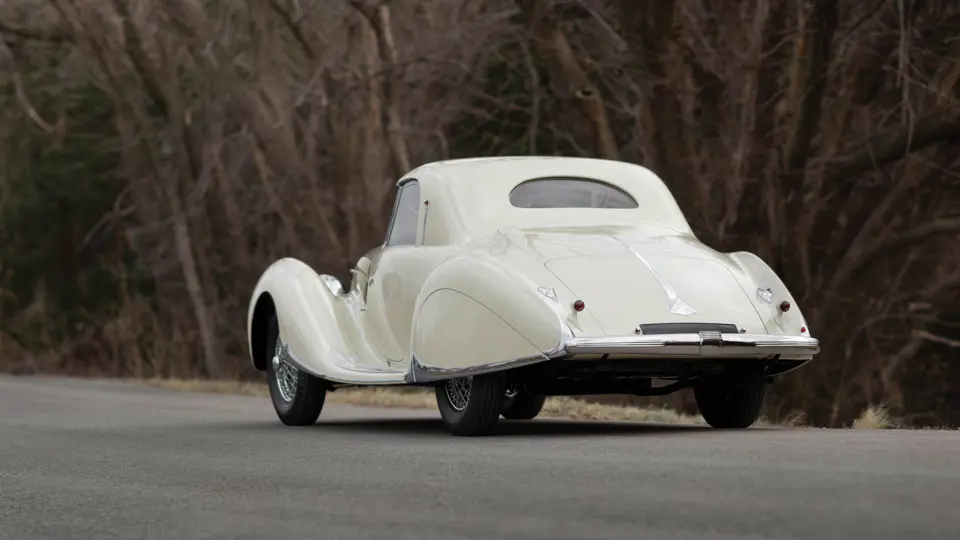

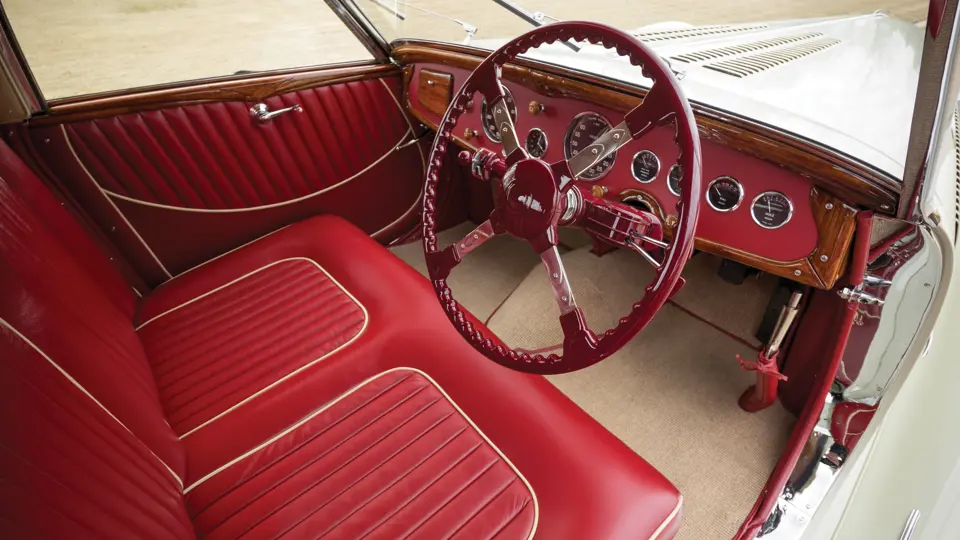

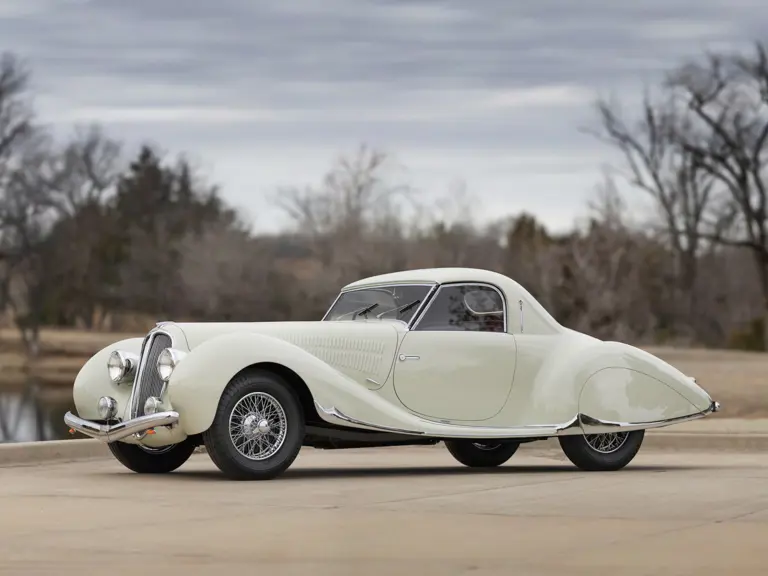
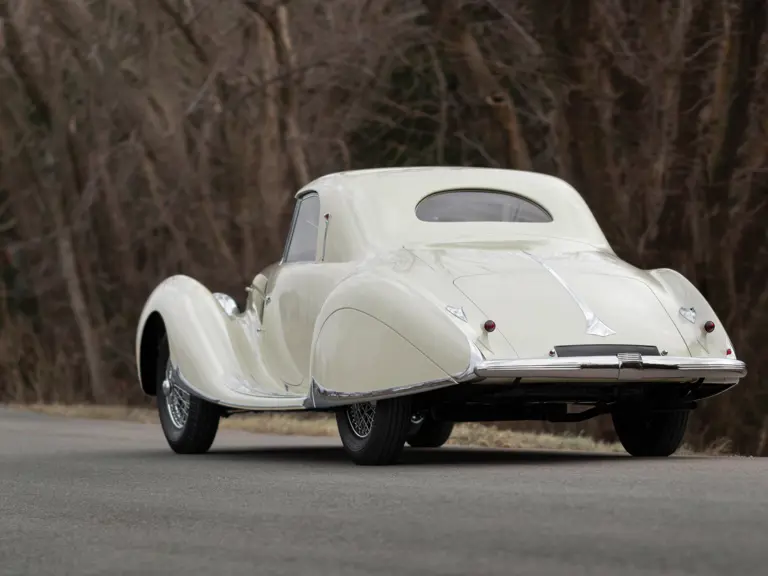
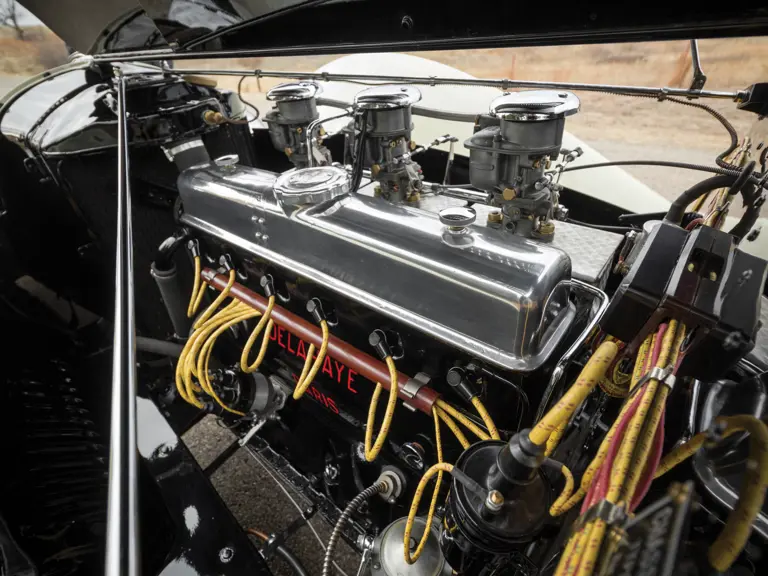

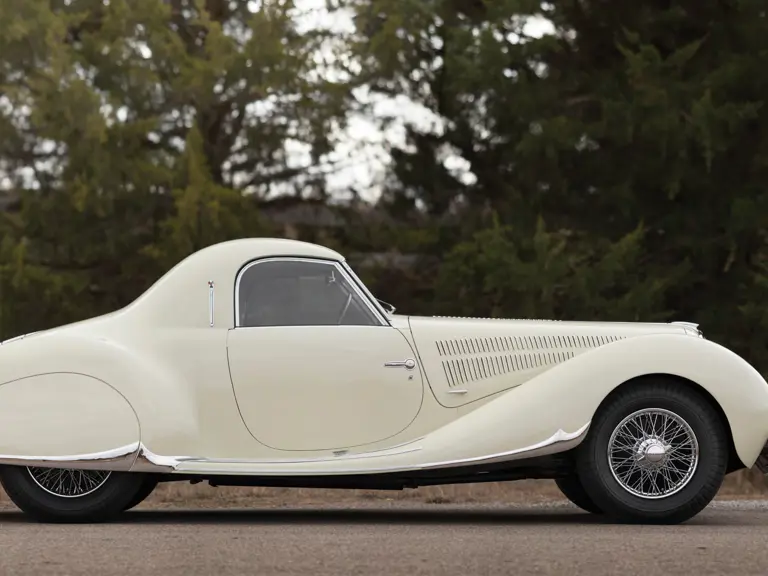
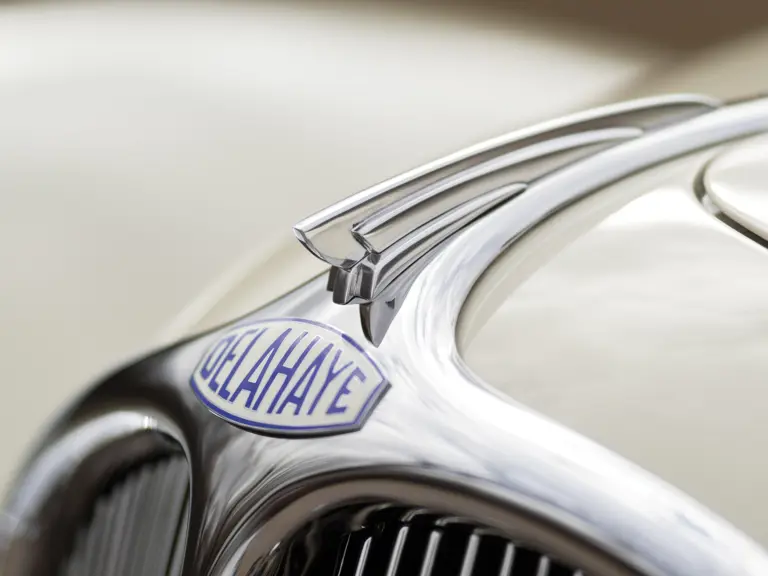

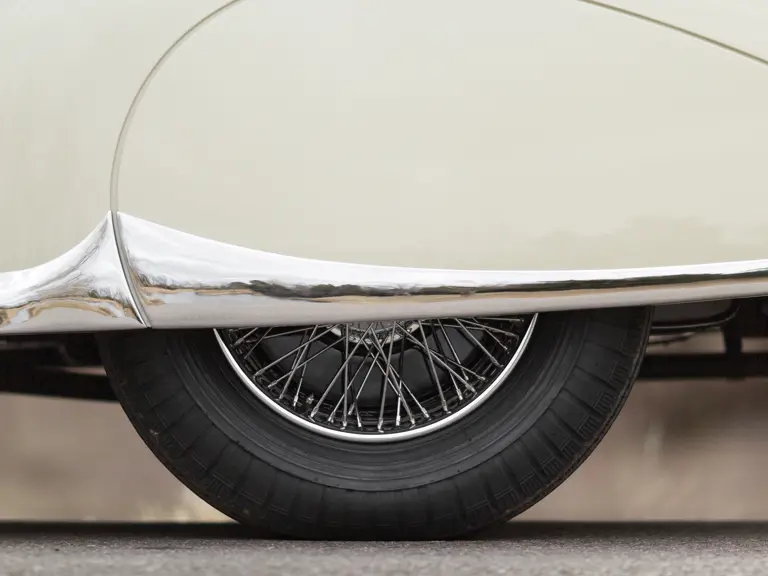
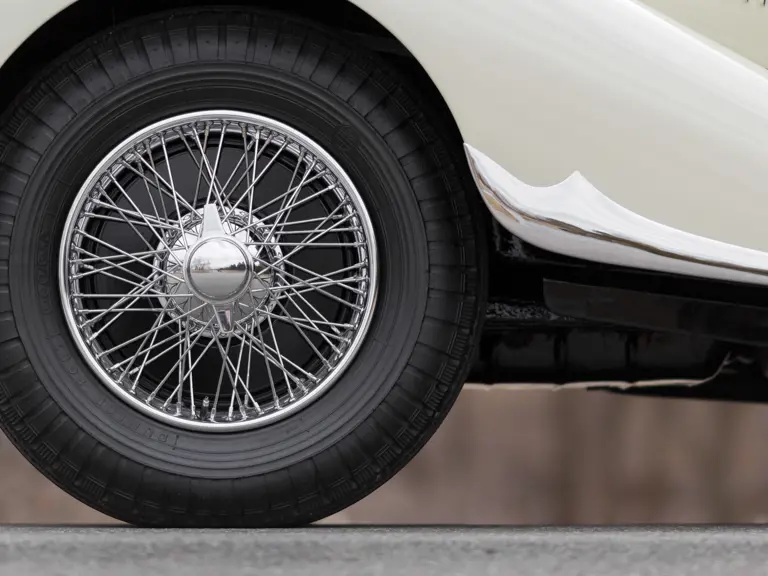
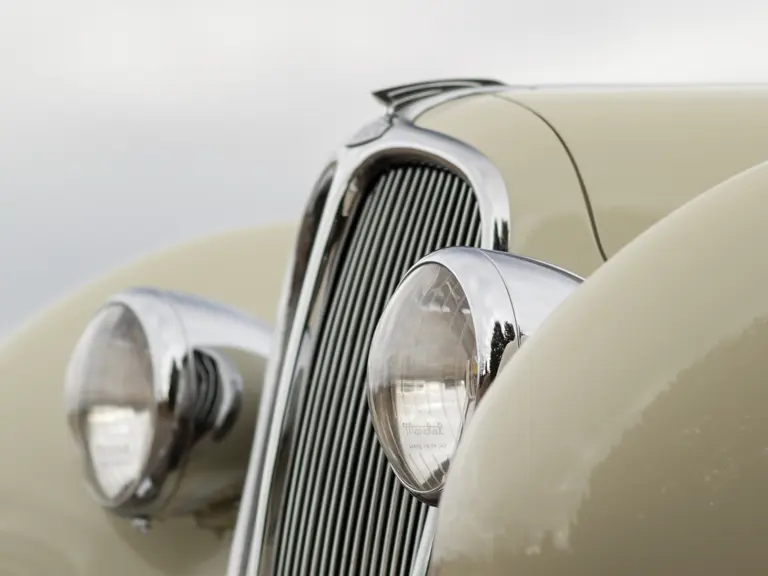
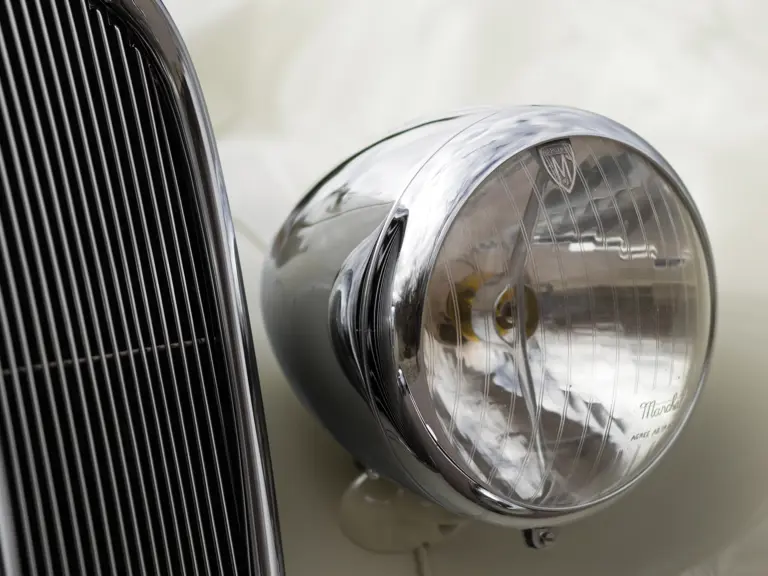
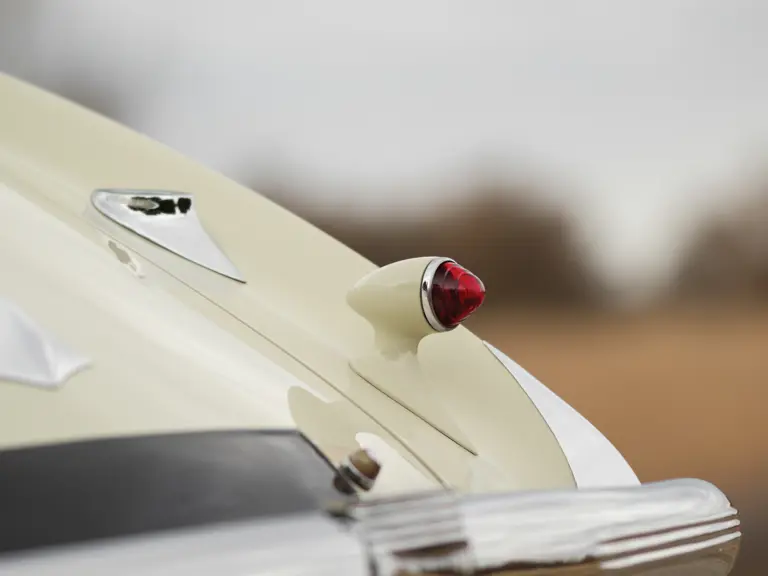
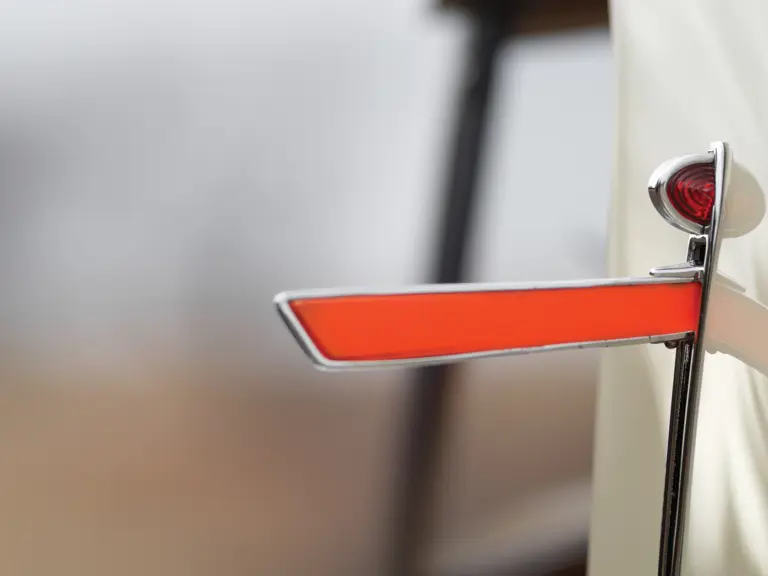

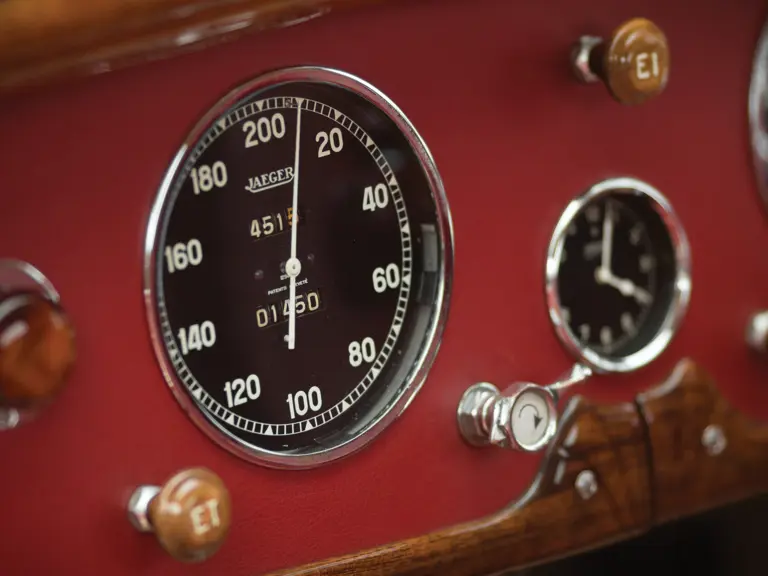
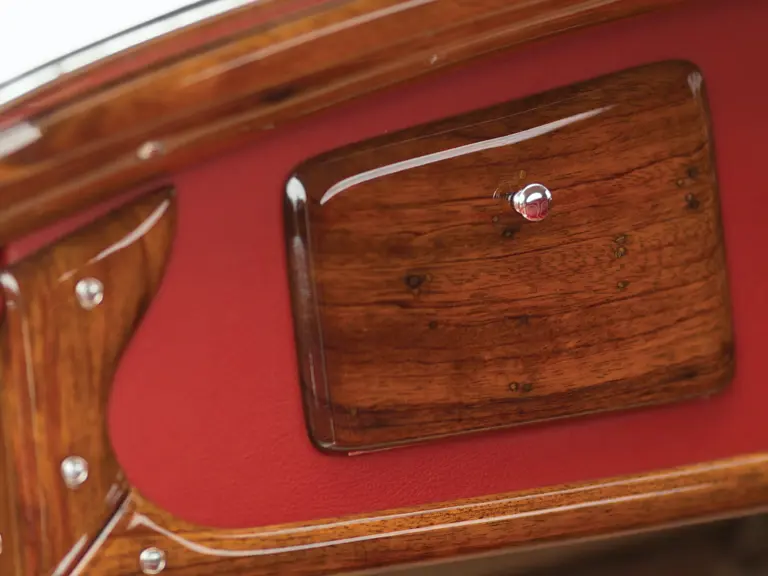
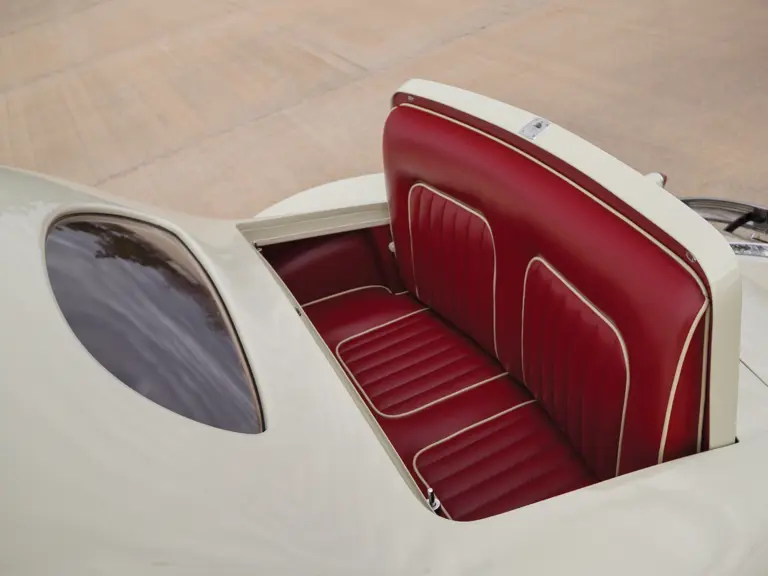
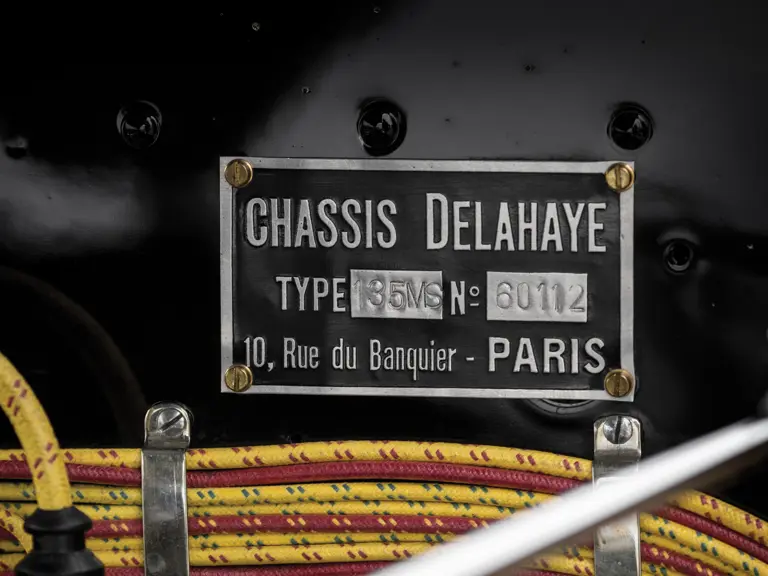

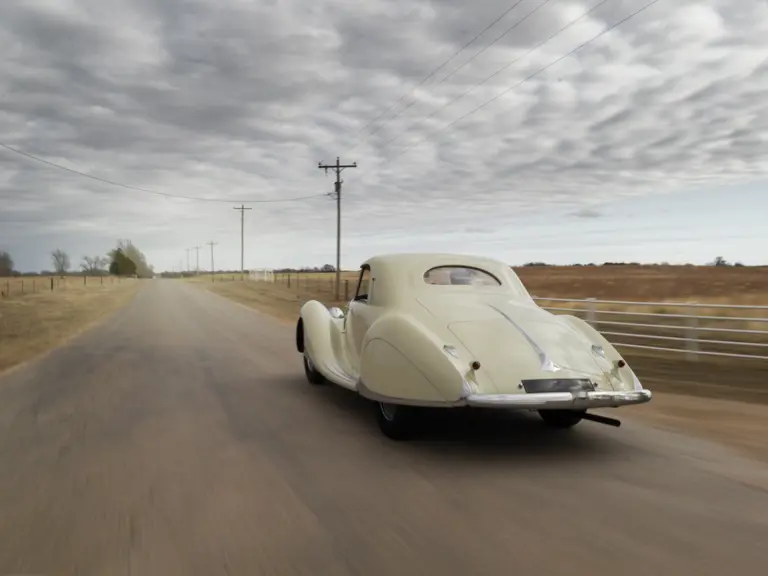

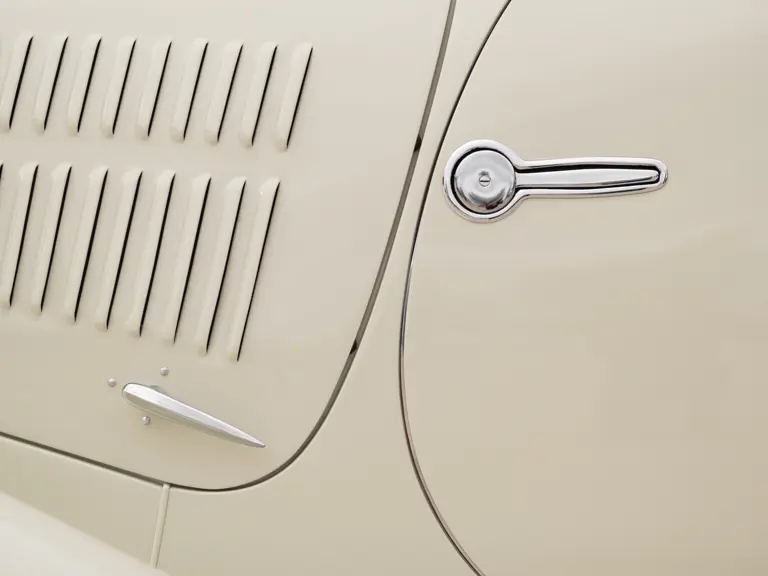




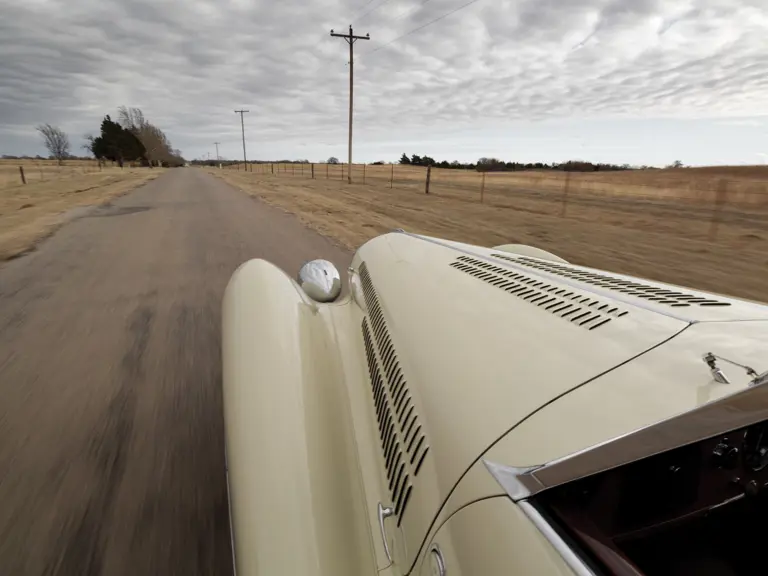
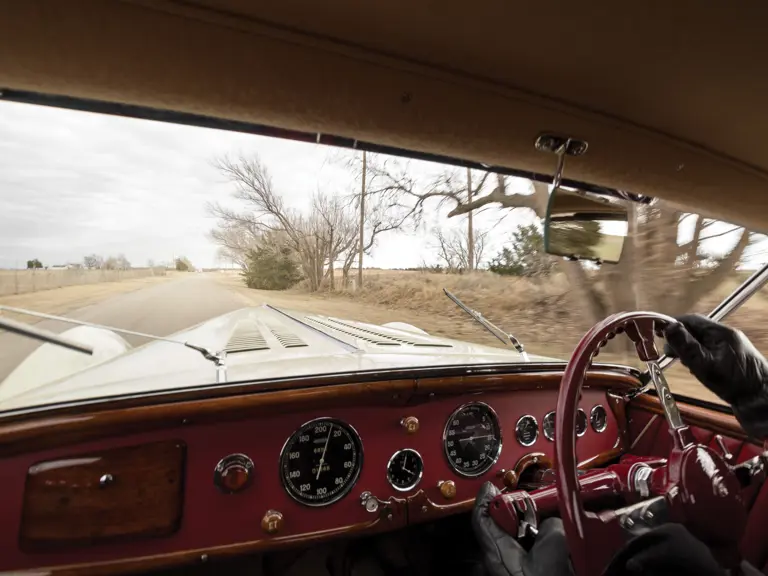
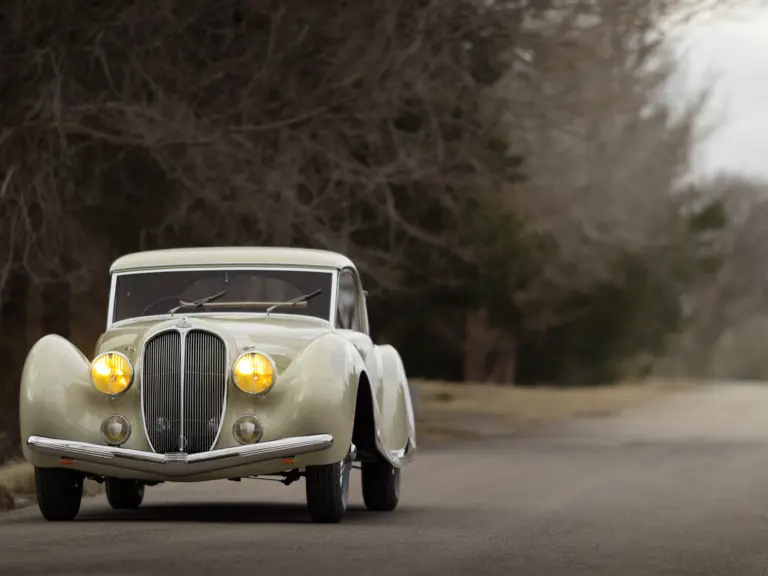
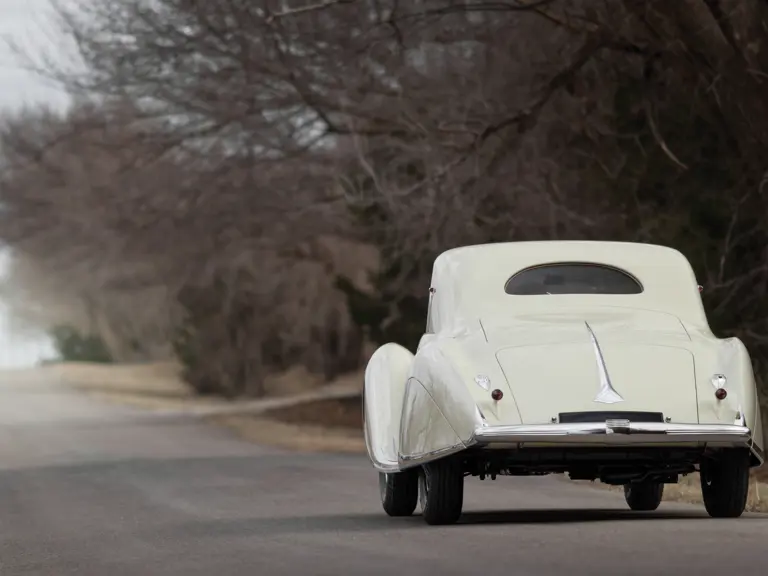
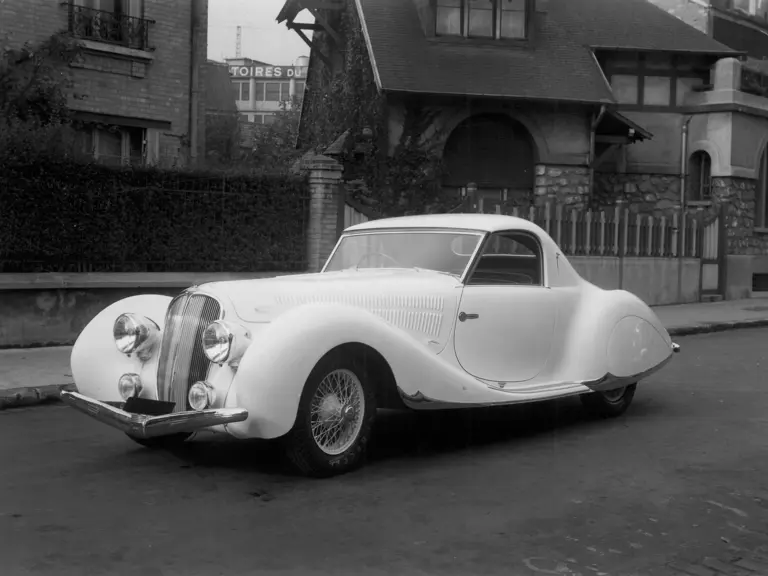
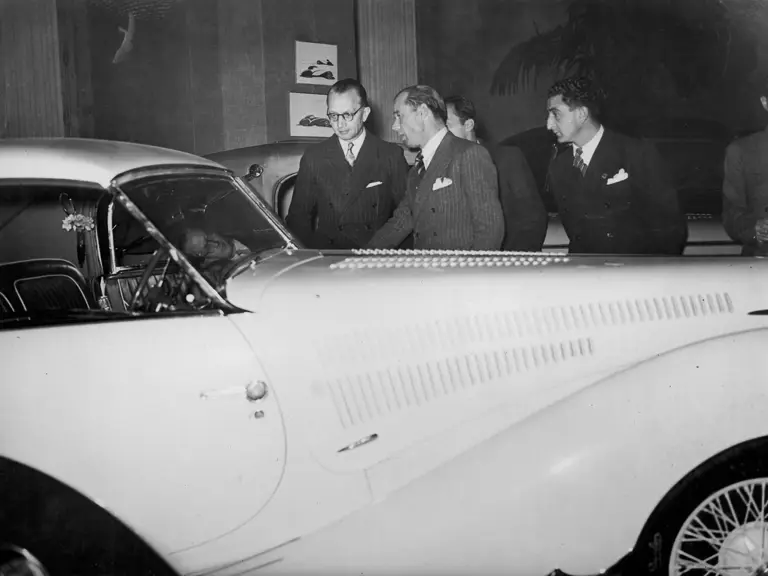

 | Amelia Island, Florida
| Amelia Island, Florida
